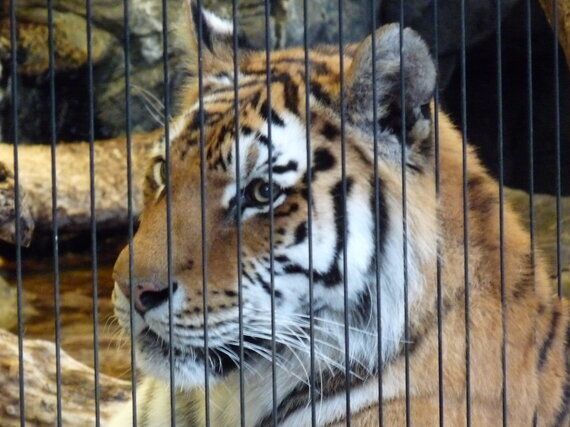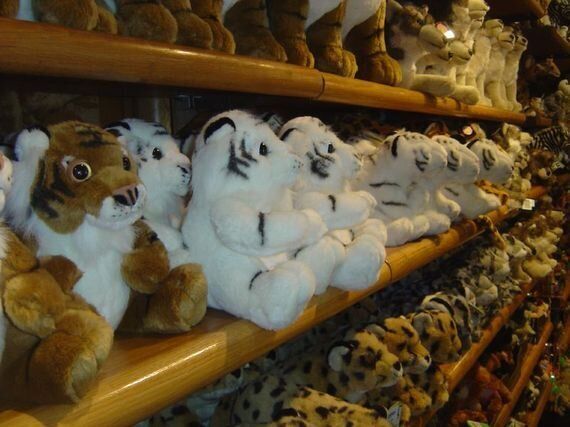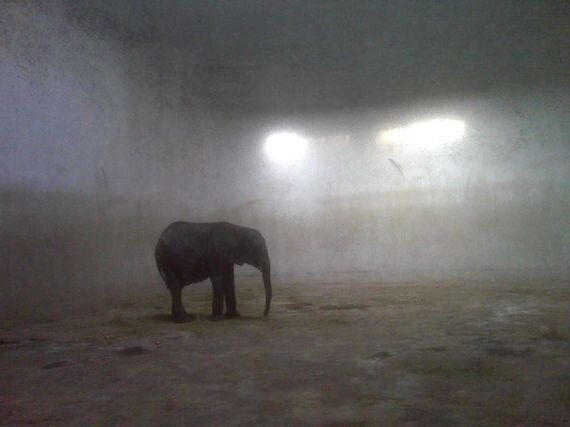
Tackling animal welfare issues is difficult. Even with a strong and growing global animal welfare movement, animals are still seen by many as a secondary concern. We are however a contradiction in action, spending millions on our pets every year, while turning a blind eye to the suffering of hundreds of millions of farm animals. The moral choices that we make are often directed by our cultural heritage, which has created a compassionately picky society. No truer example is our attitude towards animals in zoos or captive wild animal facilities.
The wide variety of species kept in zoos and the thousands of zoos across the world often leads to the assumption that keeping animals in captivity is acceptable and the norm. However times are changing. These days, through the numerous social media avenues, a more savvy and intellectually demanding public is challenging the necessity of keeping animals in this way. But the contradiction remains: there is public uproar when abuse or cruelty is highlighted in a zoo, yet millions continue to visit them (700 million a year to WAZA (World Association of Zoos and Aquariums) zoos alone) to be entertained. The issue is not black or white, it's not even 50 shades of grey, it's a flamboyant multi-coloured array of differing and passionate opinions. But can a more compassionate zoo mitigate these concerns while continuing to reach their commercial and conservation targets?
Zoos carry out conservation, they rescue animals, they educate people and delight millions of visitors a year. But a vast number of zoos are also responsible for immense cruelty, open the door to illegally sourced wildlife and capture wild animals for our pleasure. Is keeping of animals in captivity the ultimate oxymoron animal welfare? Or are the ethical and moral concerns mitigated by the conservation and education aspect of some zoos? Can poor individual welfare ever be justified if it is offset by the conservation of an entire species, or the education of millions of visitors that go through the zoo doors?
Compassion and Conservation
WAZA institutions are among the main global providers of conservation funding, investing more than US$ 350 million on ex situ and in situ wildlife activities annually. An impressive figure, although as with all statistics, one needs to probe a little deeper to determine its true value. Although zoos carry out in-situ conservation work on threatened species, the focus is skewed towards mammals, particularly the charismatic primates and carnivores, while less attractive animal groups are underrepresented. When the actual number of threatened species saved from extinction by zoos remains low and critically endangered species are left off the list does it matter that zoos are spending millions?
Historically conservation of a species has by and large taken priority ahead of the welfare of an individual animal or the ethical management of a captive population. Culling of genetically inappropriate (but otherwise perfectly healthy) animals, the movement of animals from socially complex groups for breeding programmes and holding species in inadequate conditions - choosing to ignore the welfare implications for the greater good of a species - demonstrates a flawed approach. With an emerging movement in compassionate conservation, the two disciplines can work more coherently together, complimenting both the zoos conservation efforts without becoming detrimental to individual animals. It will take compromise and a change of attitude within the zoo community, but ultimately this compassionate approach will galvanise greater support from the wider public, the zoos' target audience, while continuing with the great conservation work they actually do.

Compassion and Education
An argument used by many to justify keeping animals in zoos, is that we need to ensure we are inspiring the next generation to save our wildlife. But there is limited evidence that education is a successful output from zoos. This is offset by a recent report "A Global Evaluation of Biodiversity Literacy in Zoo and Aquarium Visitors" published in-house by WAZA, which claims that the study proved zoos and aquariums did teach us about biodiversity. A grand claim considering that the increase in positive understanding was only 5% in a sample population of 6000. More importantly is whether that understanding translates into tangible action that contributes to the care and conservation of species.
Measuring the learning value of zoos is incredibly hard. What we are really looking for are positive changes in behaviour and attitude towards animals and the environment rather than specific learning outcomes. Such behaviours may only be realised many years down the line. I'd still say attributing educational value to viewing an animal in an artificial enclosure is on a par with learning how to drive while sitting in a traffic jam. But in the main, it's not really the zoos fault. Incredibly dedicated zoo educators and increasing resources are funnelled into providing sophisticated zoo education programmes. However a visit to a zoo on a sunny day, lolly and balloon in hand, is so far removed from the real world problems that the animals in these institutions face, it is easy to see how hard the task is.
Add on the fact that many zoos still offer elephant rides, petting and other interactive opportunities with supposedly wild animals and it is ultimately a confusing and mixed message that is being given. These zoos may not be part of the accredited zoo community (although certainly some are) but the public don't know or care about that. They see all zoos as the same. We shouldn't encroach on dangerous wild animals in their habitats, but its ok to pet these ones? Mixed messages has resulted in many people still believe white tigers are a rare and endangered species, not a cruel inbred anomaly, found only in zoos due to their attraction. But zoos can inspire and excite people on topical issues that the public are interested in, and what they are interested in is conservation and welfare of animals. If zoos collectively recognised a more consistent approach to zoo education, and married up welfare concerns alongside the conservation messages, the visitors might take home more than sticky fingers from their lolly pops.

Would compassion and consistency improve the educational message?
Compassion and the Individual Animal
Due to the educational and conservation aspects of zoos, the animals within them are often seen as populations rather than individuals. But much of the criticism directed at zoos is for the seemingly indefensible decisions sometimes made over individuals. Marius the giraffe, an exhausted topic, is a great example. Another is when particular animals are sourced from the wild. A notable example being the 18 wild caught belugas for Georgia Aquarium, and more recently, 30 plus elephants were caught in Zimbabwe, supposedly as part of the Zimbabwean's strategy to reduce the number of wild elephants found in Hwange National Park.
These elephants, sentient, smart and socially complex animals, some as young as two years old, are now waiting to be transported overseas to countries that do not have the specific expertise to look after elephants, particularly traumatised wild-caught youngsters . You'd imagine the accredited zoo community are up in arms about this. It goes against most codes of ethics and welfare and helps little towards the credible conservation work they are doing. But there's not been a peep from them. What can we take from this? Either they don't care or they believe they can't do anything about it. I don't believe it's the former, but if it is the latter they couldn't be further from the truth. The zoo community has a contract with society and must rise above the pressures of commercialism to make the right ethical choices based on both societal expectations and the moral obligations they have to the animals they care for. A compassionate and reasoned voice from the global accredited zoo community would lend significant weight to such an argument, while educating the millions of visitors that not all zoos are equal.

A young male elephant stands alone in Taiyuan Zoo, in China's Shanxi Province. Zimbabwe exported him in 2012. PHOTOGRAPH COURTESY OF CHINA ZOO WATCH
Welfare is an important priority for many zoos. But prioritising individual welfare over conservation or education every time, is still a long way off. Zoos that take on non-breeding or old animals (often because no one else will), zoos that join forces with animal welfare groups to rescue animals, zoos that refuse to hold certain species and zoos that speak out against unethical and immoral welfare practices - these compassionate zoos should be the future.
photo credit (author's own)